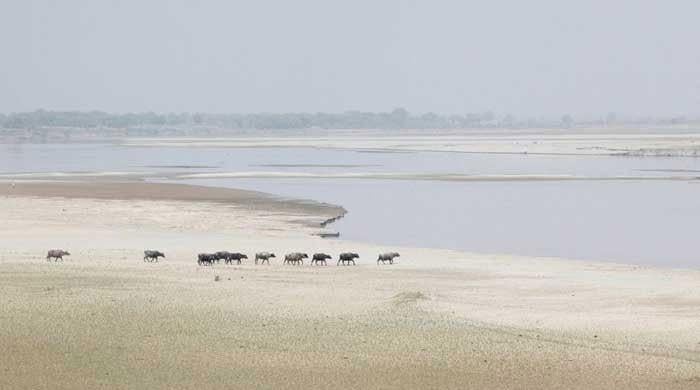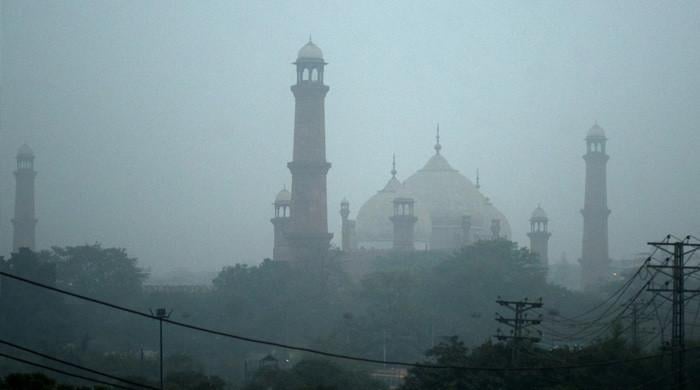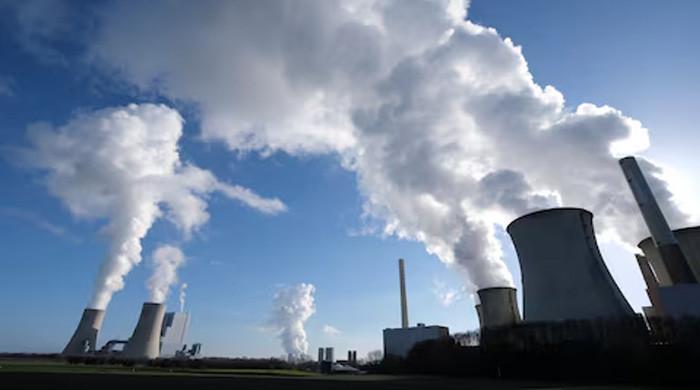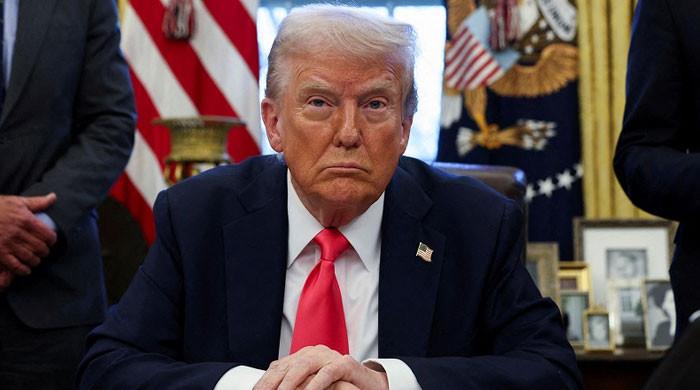Charter of national revival
"We must move fast to meet the challenges. It is now do or die – change or perish," Yousuf Nazar says
March 20, 2024
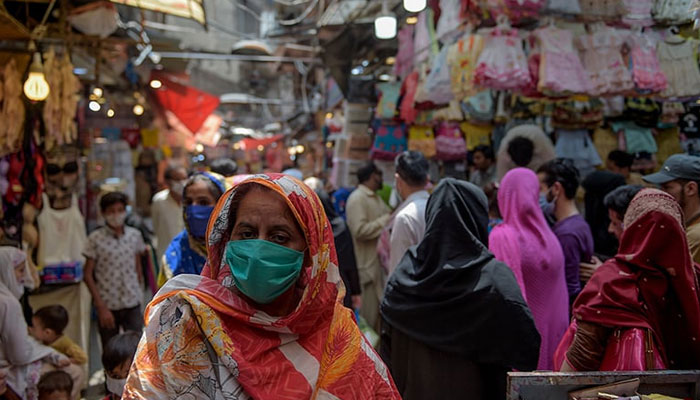
Pakistan needs more than a Charter of Economy. It needs a Charter of National Revival, based on a 4D strategy: Deregulate, Devolve, Deradicalise and Digitise.
Deradicalisation is a prerequisite to having a modern and tolerant society open to doing business with the world. Deregulation is essential to harness the energies of a private sector severely constrained by bureaucratic hurdles and rent-seeking. Without the devolution of powers to local governments, it is impossible to provide basic services in a country with one of the fastest urbanisation rates, and without digitalisation, Pakistan cannot compete in a world driven by knowledge capital and increasingly defined by the digital divide. Pakistan’s future will be defined by its success or failure to meet these challenges.
Can Pakistanis rise to the challenge posed by the current crises, or will they let the opportunity pass? This will depend on the policies of the ruling elites: will Pakistan will end up like Afghanistan, Iran, or North Korea or will it progress like South Korea, Indonesia, or Malaysia? These nations rebuilt their countries from the ruins of the armed conflicts and civil wars that they experienced during and after the colonial era. Can Pakistan do that?
Politics is the art of the possible. What is possible is limited by one’s imagination and capacity. Only the mediocre and timid would hide behind this argument and refuse to meet the challenges of their times.
According to the Financial Times, India’s public digital infrastructure has become a core part of India’s efforts to present it as a nascent economic superpower, alternative investment destination to China and leading voice of the global south. Supporters argue that “India has found a world-beating solution for building out and regulating the online commons that is more equitable than the US’s laissez-faire approach, more innovative than the EU’s regulation-heavy model and more transparent than China’s totalitarian template.”
India did not become a global economic power in a matter of a few years. It embarked on a reform process in 1991 and never looked back. India is now the third largest digitised economy in the world. The astonishing growth in India’s exports in the past five years is a case in point.
What about Pakistan? The comparison is not just about technology or exports. It is representative of the rapidly growing gap between the overall development in India and Pakistan. Two major reasons are the quality of governance (not necessarily democratic or autocratic) and the quality of education. Pakistan’s quality of education is abysmal and it will require years to improve even if reforms had started yesterday.
We must move fast to meet the challenges. It is now do or die — change or perish.
Over the past three decades, Pakistan’s economic focus, particularly in its dealings with the IMF, has centred on addressing twin deficits — the current account and fiscal deficits. Despite concerted efforts, these issues have persisted and become worse. It is time for a fundamental and larger shift in our priorities and strategy as the IMF conditions alone are insufficient for achieving sustained growth and transformation.
Therefore, sustainable economic growth, driven by increased foreign direct investment (FDI), must become the linchpin of Pakistan’s overall national agenda.
FDI flows to developing countries amounted to $841 billion in 2023, compared to just $72.8 billion in loans committed by the World Bank and $22.7 billion lent by the International Monetary Fund.
China is a great friend but no solid economic growth is possible without foreign private investment and technology transfer from OECD countries and Western companies.
Poor quality of education, lower level of female workforce participation, and pervasive extremism represent major obstacles to foreign investment in Pakistan.
Let’s face it: investors don’t feel comfortable visiting Pakistan. They see us as a politically unstable extremist country that is short of skilled human resources — an unattractive investment destination. How we can change that is the principal challenge, not just deficits.
Pakistan has not developed its human resources. Pakistani women have one of the lowest literacy levels in the developing world. According to the World Development Indicators, female adult (over 15 years of age) literacy rate in Pakistan is lower than that of even many African countries — it isnt lower than that of Ghana and Congo.
Saudi Arabia’s crown prince almost banished the role of religious scholars from public policy, disbanded its once-feared morality and recently relaxed restrictions on the sale of alcohol. In 2020, the UAE decriminalised alcohol and lifted the ban on unmarried couples living together. Dubai was ranked number one among cities with the highest spending by international tourists, earning $29.4 billion in 2022 — way ahead of London, where tourists spent $16.1 billion.
These examples underscore the importance of modernisation as part of the overall economic development. Only through comprehensive realignment of all policies towards the goal of attracting more foreign private capital can Pakistan navigate its way out of the vicious cycle of debt, low growth, inflation, and poverty.
This realignment must involve a clean break from a colonial governance model to a modern system of governance to make Pakistan an investor-friendly country where it is easy to do business in a safe environment.
Recognising the pivotal role of investment, efforts have been made to attract foreign direct investment (FDI) through initiatives such as the Special Investment Facilitation Council (SIFC). However, a comprehensive economic and foreign policy strategy is imperative for long-term stability and prosperity.
The history of Pakistan’s 23 prior arrangements with the IMF as well as experiences in Argentina, Egypt, and Ethiopia suggest that these reforms will not be sufficient to achieve the stable growth and economic transformation needed for a country with one of the highest population growth rates in the world.
Pakistan’s population growth is higher than India’s or Bangladesh’s but the country lags in key economic indicators such as savings rate, investment to GDP ratio, and revenue to GDP ratio.
It may surprise some that while Pakistan’s revenue-to-GDP ratio lagged behind India’s by an average of 7.0 percentage points during the past 20 years, it stayed above Bangladesh’s by an average of 4.0 percentage points. In 2023, Bangladesh’s tax-to-GDP ratio was under 10% but investment-to-GDP was 31% compared to Pakistan’s 13.6%. India’s tax-to-GDP ratio was 11.2% but the investment-to-GDP ratio was 34%.
Asian countries with some of the highest saving rates in the world outperformed the rest of the developing world by a wide margin. Pakistan’s savings rate is strikingly and abysmally low compared to Bangladesh and India. It cannot be attributed to just a large informal economy as both countries also have large informal sectors.
The root causes of Pakistan’s low investment and savings rates are deeply entrenched in structural issues, requiring significant political, economic, and social reforms on the one hand and making Pakistan an open and friendly country for Western private investors on the other.
Pakistan cannot and must not rely on just government-to-government aid, usually in the form of loans. The cautionary tale of Ethiopia’s state-led growth model serves as a reminder that unsustainable borrowing for large-scale projects can exacerbate economic vulnerabilities. China accounted for nearly 50% of Ethiopia’s $28 billion external debt in 2023. Last December, Ethiopia became the third African country to formally default on its debt.
The different growth models and the lessons therein merit a careful review of our priorities and goal-setting process. As we have seen in Argentina, Egypt and Ethiopia, an arrangement with the IMF or a critical geo-strategic location, or both, does not provide insurance against economic failure or even default.
Pakistan should avoid all conflicts and focus on fostering investments and technology transfer to achieve sustainable growth. While collaboration with the IMF is necessary (as South Korea and India did in the 1990s), it should not be viewed as the ultimate objective.
Rather, Pakistan must chart its course tailored to its unique circumstances, mobilising international support — particularly that of foreign private investors — vigorously to realise its economic potential by following the 4D strategy: Deregulate, Devolve, Deradicalise and Digitise.
The writer is former head of Citigroup’s emerging markets investments and author of ‘The Gathering Storm’.
Disclaimer: The viewpoints expressed in this piece are the writer's own and don't necessarily reflect Geo.tv's editorial policy.
Originally published in The News




